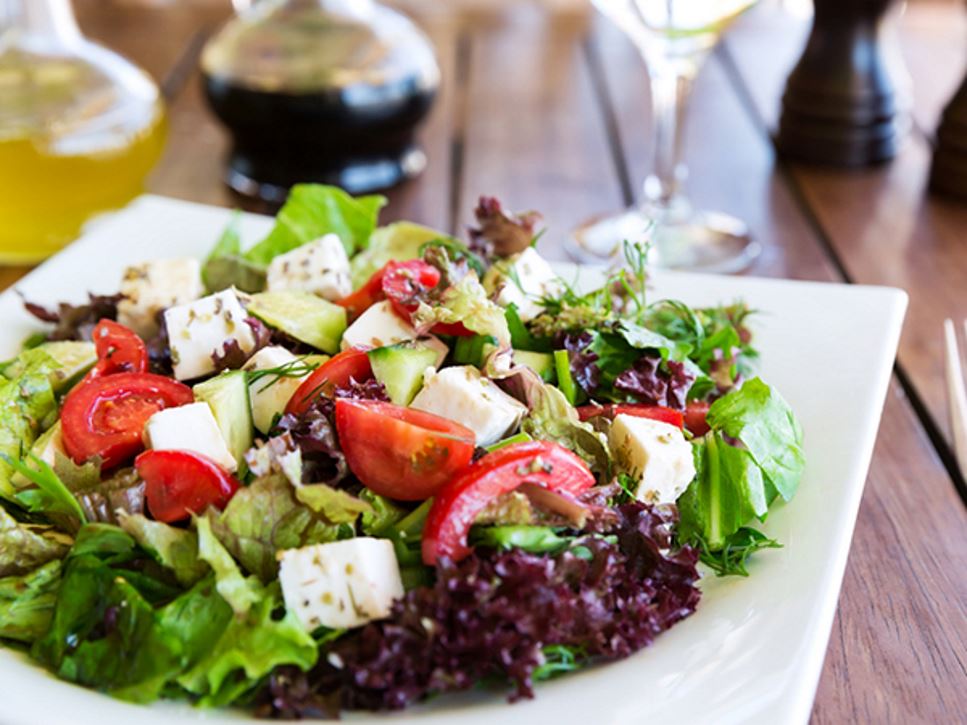Dining out can be a challenging experience for vegans and vegetarians. Some restaurants aren't vegetarian or vegan friendly, while others may not highlight their meatless options. Further complicating the matter is that vegetable dishes might be cooked with ingredients vegetarians avoid, including butter, chicken or meat stock and gelatin. The good news is restaurants are adding or expanding vegan and vegetarian menu options in response to customer requests.
Keeping a few helpful tips in mind can make dining away from home a more rewarding experience for vegans and vegetarians.
Menus
For starters, check menus for symbols such as a v or a leaf marking dishes as vegetarian or vegan. When in doubt, ask the wait staff. Increasingly, servers are being trained to meet the needs of non-meat eaters.
Don't be afraid to make a special request. Some chefs will prepare a dish that is not on the menu, or modify a dish so it fits your preferences. Or, consider ordering vegetable appetizers or side dishes as your main course. At weddings, work functions or other catered events, request a vegetarian meal in advance or ask the wait staff to exchange the meat on your plate for beans or vegetables.
Fast Food
Finding meatless options at fast food restaurants can be challenging, but many restaurants now have salad menus and sandwiches with vegetable or meat substitute fillings. Breakfast items often are vegetarian friendly, especially for lacto-ovo-vegetarians.
Dinner Party
Dining at a friend's house? This can be tricky if only one main course is served. If you are invited to someone's house for a meal, let your host know in advance about which foods you do not eat. You also can offer to bring a vegetarian dish to share.
Travel
Airlines, trains and cruise ships are increasingly working to meet the needs of their vegetarian clientele. Before you plan a trip, check with transportation groups to see if they offer vegetarian options. Often you can find vegetarian meals, fruit plates and vegan and lacto-ovo vegetarian menu options. When in doubt, pack vegetarian snacks such as nuts and dried fruit.
Global Cuisine
Global cuisine restaurants often are ideal for vegetarians. Asian menus, such as Chinese, Japanese, Thai and Vietnamese, feature a variety of meatless options including rice and noodle dishes containing vegetables and tofu. However, if you do not eat fish, ask the wait staff whether dishes contain fish or oyster sauce. South Asian cuisines, including Indian, Sri Lankan, Burmese, Pakistani and Nepali, are known for meatless dishes using breads, lentils, beans, rice, curried vegetables and yogurts. If you do not consume dairy, ensure your dishes are prepared in vegetable oil instead of common ingredients such as ghee (clarified butter), cream and paneer (a type of cheese).
Italian, Greek and Middle Eastern foods offer many meatless options such as pasta primavera, pasta marinara, falafel, couscous, minestrone soup, eggplant dishes, Greek salads and tabbouleh. Olives and feta cheese are high in sodium and should be limited if you're on a low-sodium diet. Mediterranean restaurants sometimes use large amounts of oil for sautéed dishes, dressings and sauces, which add fat and calories to food. Keep this in mind when making your menu selection.
Vegetarian-friendly Mexican cuisine may include burritos, fajitas, tacos, enchiladas, quesadillas and tamales made using rice, beans and cheese. Spanish rice, guacamole and salsa also are vegetarian (be sure rice isn't made using chicken stock). Refried beans may contain lard, so ask the restaurant staff if you are concerned. If you do not eat dairy, order dishes without cheese and sour cream.
Find a Nutrition Expert
Looking for credible nutrition information and recommendations? The Academy of Nutrition and Dietetics' network of credentialed food and nutrition practitioners are ready to help!
